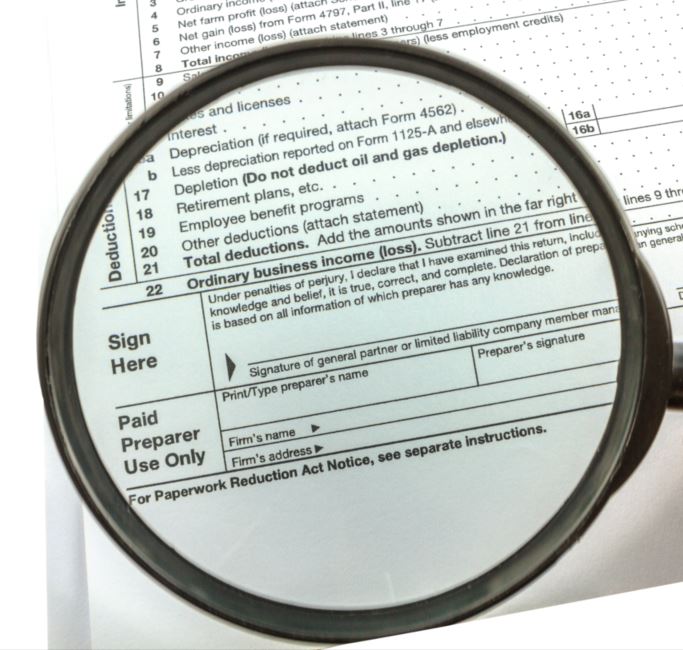This website uses cookies so that we can provide you with the best user experience possible. Cookie information is stored in your browser and performs functions such as recognising you when you return to our website and helping our team to understand which sections of the website you find most interesting and useful.
Sikich Series on Tax Reform: IRS Releases Proposed Regulations on New 20% Pass-through Deduction

One of the pillars of last year’s “Tax Cut and Jobs Act” (“TCJA”) was to make the tax code more competitive with the rest of the world. This was accomplished by reducing taxes on businesses, which led to a cut in the corporate tax rate from 35 percent to 21 percent. Congress also provided relief for non-corporate entities with a 20 percent deduction. This deduction was based on the taxpayer’s “Qualified Business Income” (“QBI”). The details of the new deduction are found in Section 199A of the tax code, and are much more complicated than the change in the corporate tax rate. There are various definitions and many exceptions and limitations in Section 199A that apply, all of which needed detailed guidance and clarification from the IRS. The IRS provided that guidance today (August 8, 2018) with the release of proposed regulations under Section 199A (please click here for a copy of these proposed regulations).
Background
Congress enacted Section 199A to provide a deduction to non-corporate taxpayers of up to 20 percent of the taxpayer’s QBI from each of the taxpayer’s qualified trades or businesses, including those operated through a Partnership, S Corporation, or Sole Proprietorship. A deduction of up to 20 percent is also available for the taxpayer’s aggregate qualified REIT dividends and qualified publicly traded partnership income. For each qualified trade or business, Section 199A limits the amount of this deduction to the lesser of 1 or 2 below:
- 20 percent of the taxpayer’s QBI with respect to the qualified trade or business; or
- The greater of:
- 50 percent of the W-2 wages with respect to the qualified trade or business; or
- The sum of 25 percent of the W-2 wages with respect to the qualified trade or business plus 2.5 percent of the unadjusted basis immediately after acquisition of all qualified property.
- Further, this wage limitation is phased-in above a threshold amount based on the taxpayer’s taxable income.
Section 199A also indicates that the QBI deduction is not available for an employee’s wages and for income from a “Specified Service Trade or Business (“SSTB”). Generally the SSTB are service type businesses, however, there was much uncertainty as to what was (and was not) designated as a SSTB. Even if income was earned from a SSTB, the deduction might be available if the taxpayer’s taxable income is less that a threshold amount. So, there are potential significant tax benefits available, but also many complications, and thus the need for IRS guidance.
Section 199A Proposed Regulations
The regulations (including the preamble to the regulations) run nearly 200 pages, and cover six main areas:
- Operational Rules
- Determination of W-2 Wages and Unadjusted Property for the Wage Limitations
- Qualified Business Income
- Aggregation Provisions
- SSTB Rules
- Rules for Pass-through Entities
Each of these areas has detailed rules, definitions, exceptions, etc. There are numerous examples in the proposed regulations to clarify various items. We will be analyzing and reviewing these proposed regulations under Section 199A and providing another update in the coming weeks that will identify planning opportunities and pitfalls.
In addition to releasing these proposed regulations, the IRS issued Notice 2018-64 dealing with upcoming guidance in the form of a revenue procedure. This revenue procedure will address methods for determining wages for the wage limitation under Section 199A. (Please click here for a copy of Notice 2018-64).
Takeaway
The new 20 percent deduction for a taxpayer’s qualified business income presents a significant tax opportunity. With this opportunity, however, comes much complexity. The proposed regulations, while detailed and complicated, provide some direction from the IRS in how taxpayers and tax practitioners can apply and plan with this new provision. Please contact your Sikich tax advisor with any questions you may have.
This publication contains general information only and Sikich is not, by means of this publication, rendering accounting, business, financial, investment, legal, tax, or any other professional advice or services. This publication is not a substitute for such professional advice or services, nor should you use it as a basis for any decision, action or omission that may affect you or your business. Before making any decision, taking any action or omitting an action that may affect you or your business, you should consult a qualified professional advisor. In addition, this publication may contain certain content generated by an artificial intelligence (AI) language model. You acknowledge that Sikich shall not be responsible for any loss sustained by you or any person who relies on this publication.




